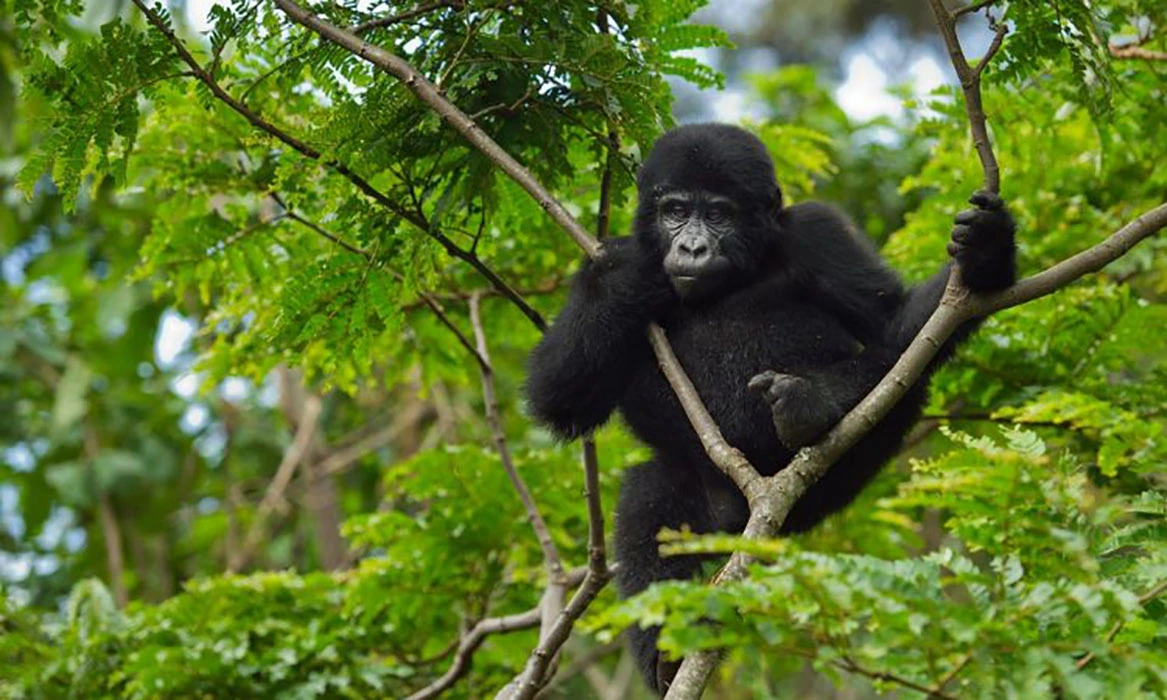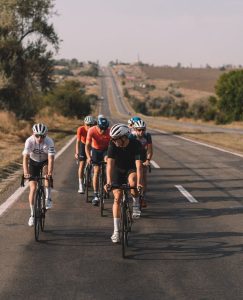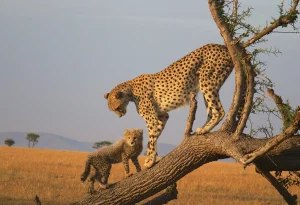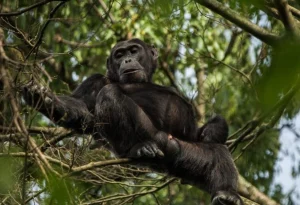How difficult is gorilla trekking?
Hiking into deep forests in pursuit of wild gorillas is known as “gorilla trekking.” Before finally coming across a gorilla family, the exercise entails going across steep hills, deep forest, rivers, and water streams. Many travelers always ask, How difficult is gorilla trekking?
Amazing primates, gorillas are found only in sub-Saharan Africa. Gorillas inhabit the hilly and forested regions of several African nations. The pastime known as “gorilla trekking” involves hikers traversing these jungles in pursuit of gorillas in their native environment. Mountain gorillas are the most well-known and sought-after gorilla species. Only three African countries-Uganda, Rwanda, and the Democratic Republic of the Congo are home to the endangered mountain gorilla species. Like its name implies, mountain gorillas live in mountainous regions of gorilla destinations, typically in high-altitude regions with dense rainforest cover.
The Bwindi Impenetrable National Park in Uganda, the Virunga Massifs, which include the Mgahinga Gorilla National Park in Uganda, the Virunga National Park in the Congo. And the Volcanoes National Park in Rwanda, are home to mountain gorillas. With only about 1000 mountain gorillas remaining in the world. Bwindi Impenetrable National Park is the gorilla destination with the largest gorilla population. More than half of the world’s gorilla population is found in Uganda’s Bwindi Impenetrable National Park. In order to find gorillas in their native habitat which is teeming with other species, flora, and fauna that captivates visitors. Gorilla trekking, particularly mountain gorilla trekking, entails hiking through these lush tropical rainforests.
Duration for gorilla trekking
The length of time spent gorilla trekking is a crucial consideration. Travelers usually have the opportunity to hike until they truly have a chance to interact with the gorillas. In Uganda, gorilla trekking can last anything from thirty minutes to six hours or longer. For a variety of reasons, including finding food and a place to nest, gorillas are always on the go. Since they are always moving, gorilla trekking can be rather unpredictable due to the need to follow the gorilla tracks. Even while it might only take 30 minutes or less to locate the gorillas. It is as conceivable to spend six hours or longer in order to see them.
No matter how long it takes to locate the gorillas. You will be astounded by their breathtaking beauty as soon as you see them in their natural environment. Jet black black backs, adult females, babies. And young gorillas will all be visible to you, along with the silverback, the family’s leader. The time it takes to locate the gorillas, however how challenging it may be, will all be worthwhile when you finally see them.
After you locate the gorillas, you will spend an hour admiring their beauty and majesty. It is advisable that travelers spend some time to prepare for the gorilla trekking so that they are at least somewhat fit to handle the long hours of trekking the gorillas, as the time required to reach them may be taxing. It’s also advisable to hire a porter to help you carry your bags so that you have the energy to complete the gorilla trek. For travelers who are too old, disabled, or unfit to undertake the gorilla trek, sedan chairs can be reserved for them. And multiple people will carry them during the journey.
Terrain and altitude
As their name implies, mountain gorillas live in the mountainous regions of the rainforests they call home. It is no surprise that Bwindi Impenetrable National Park is named “impenetrable” given its mountainous, rocky, and densely vegetated landscape. In order to reach the gorillas during gorilla trekking. Your guide assists you in removing foliage and navigating different types of terrain. However, this is insufficient, and in order to navigate the increasingly difficult terrain. And high elevations, travelers are advised to be physically and psychologically prepared for the gorilla trip.
The climate
In the rainforests where mountain gorillas live, the weather can be erratic at times. Rainfall can occur during the “dry season,” or during the supposedly wet season, the sun may shine for hours on end. The dry season, when the park’s roads and trails are more livable, is the ideal time of year to undertake gorilla trekking. How difficult is gorilla trekking? It is still recommended to bring a rain jacket or poncho because the mountain gorilla parks are tropical rainforests and it may still rain. In addition to being the busiest travel times, the dry season, which runs from June to September and December to February, causes gorilla trekking permits to sell out quickly. A booking gorilla trekking permit far in advance, at least three months before the trip date—is strongly advised.
The wet season, which occurs throughout the other months of the year, can make it more difficult to trek gorillas since the roads and pathways are muddy and slick. And the vegetation is so overgrown that it can be difficult to detect them and take images of them. However, it doesn’t always rain; occasionally, it just does so in the afternoons and evenings, allowing visitors to take advantage of the early hours to go gorilla trekking.
The price of permits for gorilla trekking
Based on the price of gorilla trekking permits, some tourists might evaluate the degree of difficulty of gorilla trekking. Permits for gorilla hiking differ according on the location. For instance, a single gorilla trekking permit in Rwanda costs $1500 per person each trek, but Congo gorilla trekking licenses are $400. Gorilla hiking permits in Uganda are $300,000 for East African nationals, 700 for foreign residents, and $800 for foreign non-residents.




